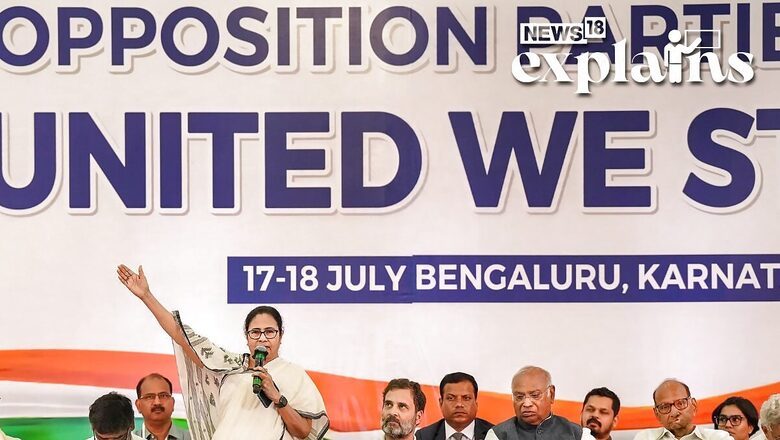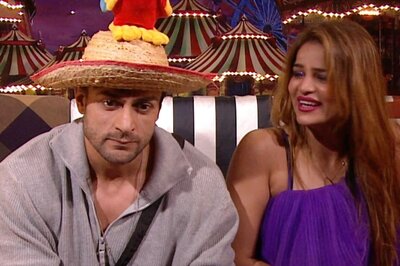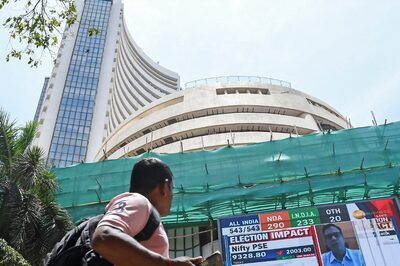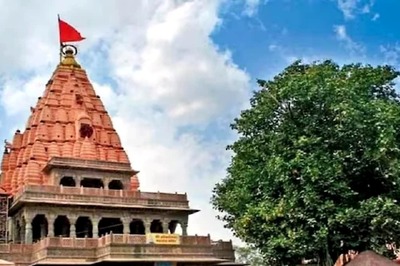
views
July 18 witnessed the political warm-up of parties readying themselves for the Lok Sabha elections to be held next year. On one hand, the ruling Bhartiya Janta Party (BJP) organized a meeting of 38 alliance partners together called the National Democratic Alliance (NDA), and on the other hand, leaders of 26 opposition parties came together in Bengaluru to forge a new alliance called INDIA, i.e., Indian National Developmental Inclusive Alliance.
As opposition parties forge a new alliance against the incumbent government, revisiting former political alliances will give a sense of what this new one can bring to the table of national politics.
How Coalitions Came About
The first two decades of independent India witnessed a predominance of the Congress party which retained absolute majority in parliament and most of the states. M Laxmikanth in his book ‘India Polity’ writes that even though there was a split in Congress party in 1969, the government of Indira Gandhi managed to survive and complete its term with the support of other parties. In 1971, the Congress Party led by Indira Gandhi got a decisive mandate in the Lok Sabha elections and formed a single-party government which lasted till 1977, when Indira Gandhi lifted the emergency imposed in June 1975 and called for a fresh election.
In 1977, Congress suffered a major defeat and the era of coalition politics at the national level became a regular phenomenon where governments were formed with the support of many other parties. And this trend continued till 2014 when BJP got an absolute majority and formed the government. Although BJP got a clear majority in the 2014 Lok Sabha elections, it formed the government with its pre-poll alliance partners.
First Coalition: Janta Party (1977-1979)
India’s first experiment with the coalition at the national level started in the mid-1970s when different parties opposing the Indira Gandhi regime came together.
Saba Naqvi in her book titled ‘Politics of Jugaad: The Coalition Handbook’ writes, “Various Opposition parties came together quickly to form the altogether new Janata Party. Anyone opposed to the Emergency, even from within the Congress, joined the party. Notable among them was Jagjivan Ram, one of the most prominent Dalit leaders of electoral democracy. The Jana Sangh formally ceased to exist, as it merged its identity with the new party. But the most prominent were the socialists and the Lok Dal of Charan Singh, which also merged with the Janata Party. All of them accepted the leadership of JP, and the main aim of their campaign was to oppose Indira Gandhi and the Emergency.”
The Janata Party was officially launched on 23 January 1977. The two years of the Janta Party had two prime ministers; Morarji Desai and Charan Singh.
The coalition won the Lok Sabha elections held in 1977 but infighting between different constituents led to the fragmentation and finally the collapse of the government and the alliance.
Expressing his deep anguish on the fall and failure of the coalition, former Prime Minister Atal Bihari Vajpayee said, “In retrospect, the responsibility for this state of affairs must be shared by all — group loyalties and personal ambitions marked the very first steps of the infant party. The performance of the Janata governments, both at the Centre as well as in the states, was better than that of the earlier Congress regime. But factional quarrels within the party and public airing of grievances vitiated the atmosphere and sullied [its] image.”
And Jaya Prakash Narayana popularly known as ‘JP’ who was the cementing force behind this coalition simply said, “The garden is destroyed.”
Second coalition: National Front (1989-1990)
The National Front consisted of Janta Dal, Telugu Desam Party (TDP), Dravida Munnetra Kazhagam (DMK), Asom Gana Parishad (AGP), and Congress (Socialist). BJP and left parties supported from the outside. The Congress Party, which recorded a massive victory in the 1984 Lok Sabha election in the backdrop of the assassination of Indira Gandhi, witnessed a defeat in the Lok Sabha elections held in 1989. While Congress emerged as the single largest party, it could get only 197 seats.
The National Front had won 146 seats but with the support of the BJP, which had 86 seats, and the left parties, which had 52, it could form the government with VP Singh as the Prime Minister.
However, the government fell after the BJP withdrew its support following the arrest of senior leader LK Advani who was leading a rath yatra from Somnath to Ayodhya to mobilise people for the construction of the Ram Mandir in Ayodhya, Uttar Pradesh.
Commenting upon the nature of the National Front coalition, Sanjay Ruparelia in his book ‘Divided We Govern: Coalition Politics in Modern India’ wrrote, “Ideologically, the new governing coalition was a successor to the Janata Party. The main object of the National Front, according to Article 2 of its constitution, is to build up a Democratic, Secular and Socialist State in India and provide a clean and efficient administration for the country with an emphasis on equality and social justice.”
Third Coalition: Janta Dal (Socialist) or Samajwadi Janta Party (1990-91)
This coalition was forged after the fall of VP Singh’s government. Chandra Shekhar broke away from the main Janata Dal, formed Samajwadi Janata Party with 64 members of parliament (MP), and became Prime Minister with the support of the Congress. However, his prime ministership and coalition lasted for just seven months, as Congress withdrew the support after allegations were made that the government was snooping on Rajiv Gandhi.
Fourth Coalition: United Front: (1996-1998)
This coalition also had two prime ministers in two years; HD Deva Gowda and I.K Gujaral. Janta Dal, CPI, Congress (T), Samajwadi Party, DMK, AGP, Tamil Maanila Congress (TMC), CPI, and Telugu Desam Party (TDP) were part of this coalition and the Congress extended outside support.
Commenting on this coalition, Sanjay Ruparelia writes,” The eleventh general election produced a deeply fractured verdict. Twenty-nine parties and nine independents managed to secure a presence in the Lok Sabha. Seven of eight national parties accounted for approximately three-quarters of the total: 403 of 543 parliamentary seats. 18 of 30 state parties captured 127 seats, a fifth of the overall prize. Notably, only four of 170 registered (unrecognized) parties, each winning one constituency apiece, managed to survive. The incumbent Congress(I) suffered its worst electoral defeat to date. The party won 140 seats, a third less than the 232 it had secured (despite contesting fewer constituencies) in 1991.”
The BJP, in sharp contrast, scaled new heights. The party was now the single largest formation with 161 parliamentary seats, 41 more than in 1991. BJP led by AB Vajpayee formed the government but could not survive the confidence vote. After the fall of Vajpayee’s government, an all-party meeting was held where the idea of the Third Front was mooted and materialised. Congress, with a substantial 140 seats, declined to head the government but decided to support the coalition. However, again the differences between the constituents of the alliance led to the fall of the government and coalition.
Fifth Coalition: National Democratic Alliance (NDA): (1998-til now)
This was a coalition formed in 1998 and was a pre-poll alliance and consisted of BJP, All India Anna Dravida Munnetra Kazhagam (AIADMK), Biju Janata Dal (BJD), Shiv Sena, Lok Shakti, Arunachal Congress, Samta Party, Akali Dal, Pattali Makkal Katchi (PMK), and others. This coalition has won four Lok Sabha elections i.e., of 1998, 1999, 2014, and 2019. Since its formation, many of its partners have left the coalition and many new parties have joined it.
However, it is the only coalition that has been in existence for 25 years.
Sixth Coalition: United Progressive Alliance (UPA) 1 & UPA 2: (2004-2014)
This alliance won two elections i.e., 2004 and 2009. It consisted of Congress, Nationalist Congress Party (NCP), DMK, Rashtriya Janata Dal (RJD) LJP, and PMK. In the first UPA government, CPI and CPM supported it from outside but they withdrew support on the issue of the nuclear deal with the USA.
Political scientist Bidyut Chakrabarty in his book ‘Forging Power: Coalition Politics in India’ made an important observation regarding coalition politics. He wrote, “Politics in India has been going through a dramatic metamorphosis. Her democracy is now acquiring a mass character and a new vibrancy —- with the active participation of hitherto marginalised and underprivileged groups in the political processes. As a polity, India has thus emerged as a creative experiment of combining ‘democratic responsiveness to cultural differences with a federal conciliation of regional community, identity and autonomy claims and a nationally concerted promotion of regional capability.”
He added, “Simultaneously, the earlier party system is changing rapidly, as are political equations, and a new era of coalition politics has begun. In the conduct of politics, as the Rudolphs emphasize, ‘a dominant party system and majority governments have given way to a multi-party system and coalition governments’. Clearly, the terms of political dominance have changed, both at the regional and national level, which is different from ‘centralized power-broking and cooption and towards a more complex mechanism of negotiation, alliance and coalition-building.”
While coalitions are the intrinsic feature of Indian politics today, history proves that a coalition without a strong party acting as an anchor has failed. The new alliance forged by the opposition parties on July 18, will also need a cementing force in the form of a strong anchor with a will and power to keep the constituents intact.



















Comments
0 comment